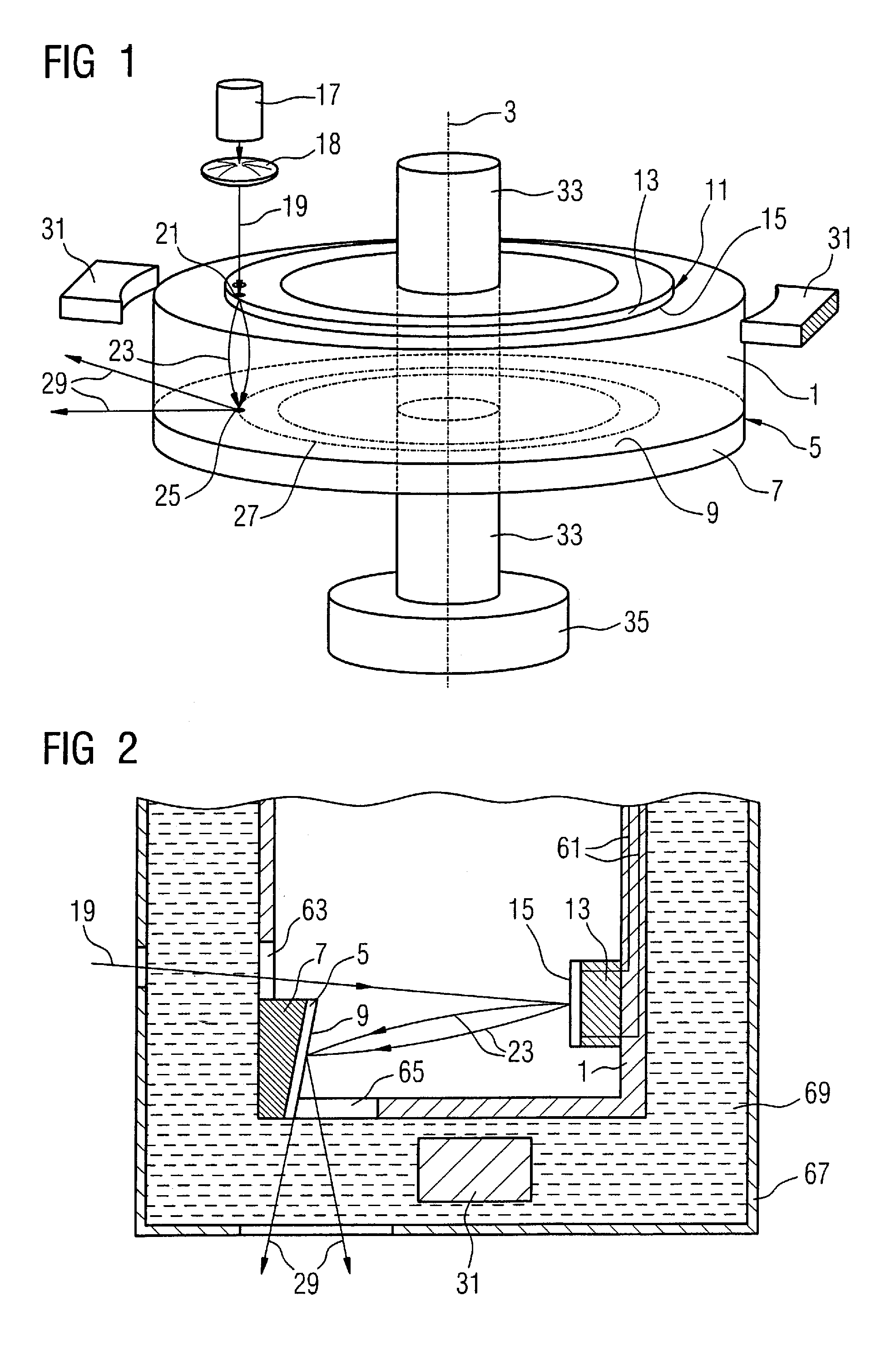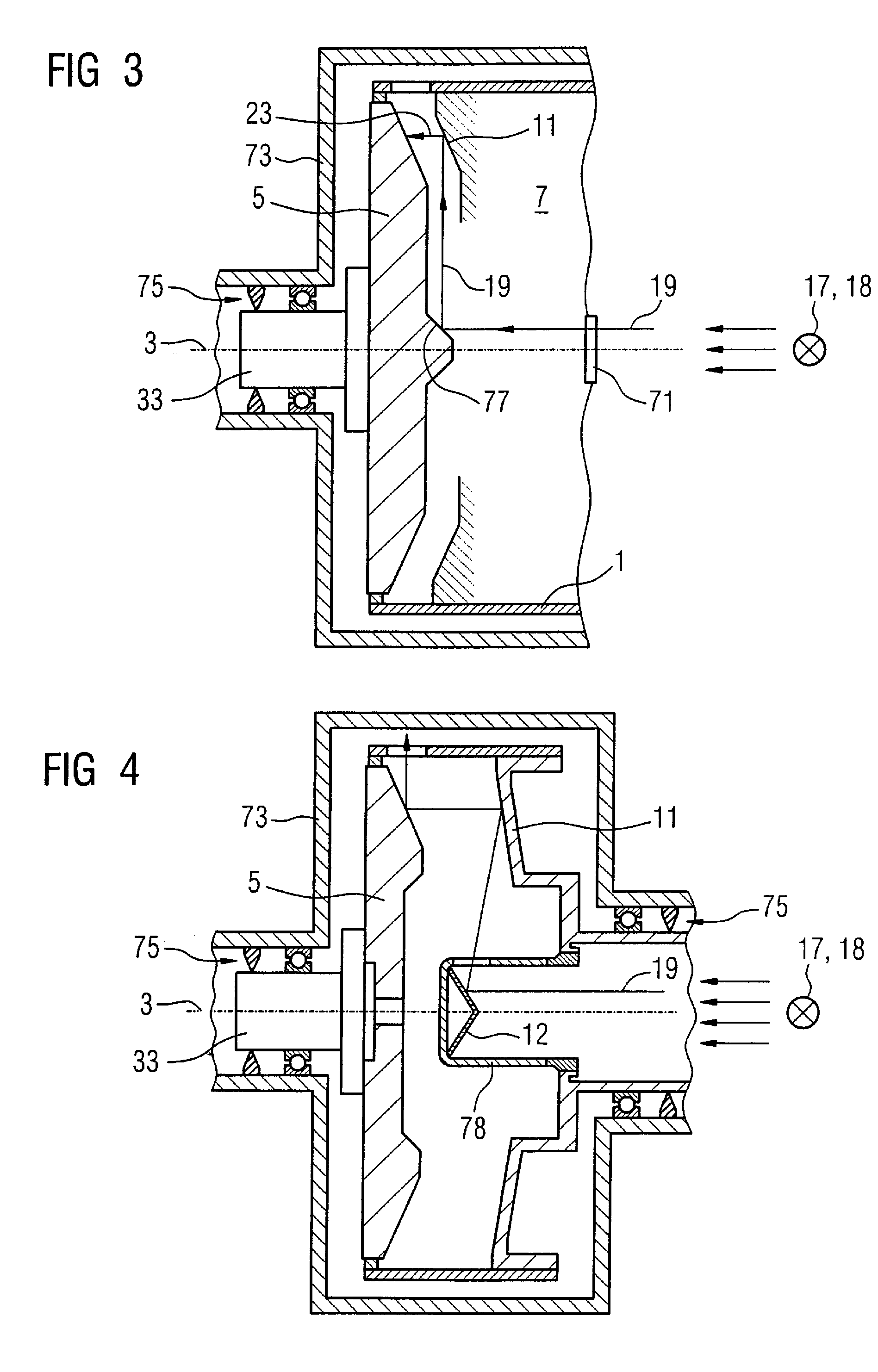X-ray radiator with a photocathode irradiated with a deflected laser beam
a technology of x-ray radiator and laser beam, which is applied in the direction of x-ray tube cathode assembly x-ray tube cooling, etc., can solve the problems of focusing electron beam, generating soft x-ray radiation, and the use of such an x-ray tube is only in a limited manner, and achieves the effect of flexible and suitable for industry
- Summary
- Abstract
- Description
- Claims
- Application Information
AI Technical Summary
Benefits of technology
Problems solved by technology
Method used
Image
Examples
Embodiment Construction
[0028]A three-dimensional representation of a vacuum housing 1 is shown in FIG. 1. The vacuum housing 1 is fashioned as a cylinder (having a cylinder jacket formed of an insulating material) and the cylinder is mounted in a rotationally symmetrical manner on an axis 3. An anode 5 forms a base of the cylinder. The anode 5 has a support layer 7 and an annularly-fashioned surface 9 from which x-rays 29 are emitted. An annularly-fashioned cathode 11 is located in the opposite base of the vacuum housing 1 (cylinder). The cathode 11 has a support layer 13 that is part of the exterior of the vacuum housing 1 and a surface 15 that facing the interior of the vacuum housing 1.
[0029]The anode 5 and cathode 11 shown in FIG. 1 are fashioned axially symmetrically, such that the electron beam or the laser beam always strikes the surface of the anode 5, or the cathode 11 during the rotation. However, it can also be advantageous to fashion the anode 5 and the cathode 11 (in particular their support ...
PUM
 Login to View More
Login to View More Abstract
Description
Claims
Application Information
 Login to View More
Login to View More - R&D
- Intellectual Property
- Life Sciences
- Materials
- Tech Scout
- Unparalleled Data Quality
- Higher Quality Content
- 60% Fewer Hallucinations
Browse by: Latest US Patents, China's latest patents, Technical Efficacy Thesaurus, Application Domain, Technology Topic, Popular Technical Reports.
© 2025 PatSnap. All rights reserved.Legal|Privacy policy|Modern Slavery Act Transparency Statement|Sitemap|About US| Contact US: help@patsnap.com



